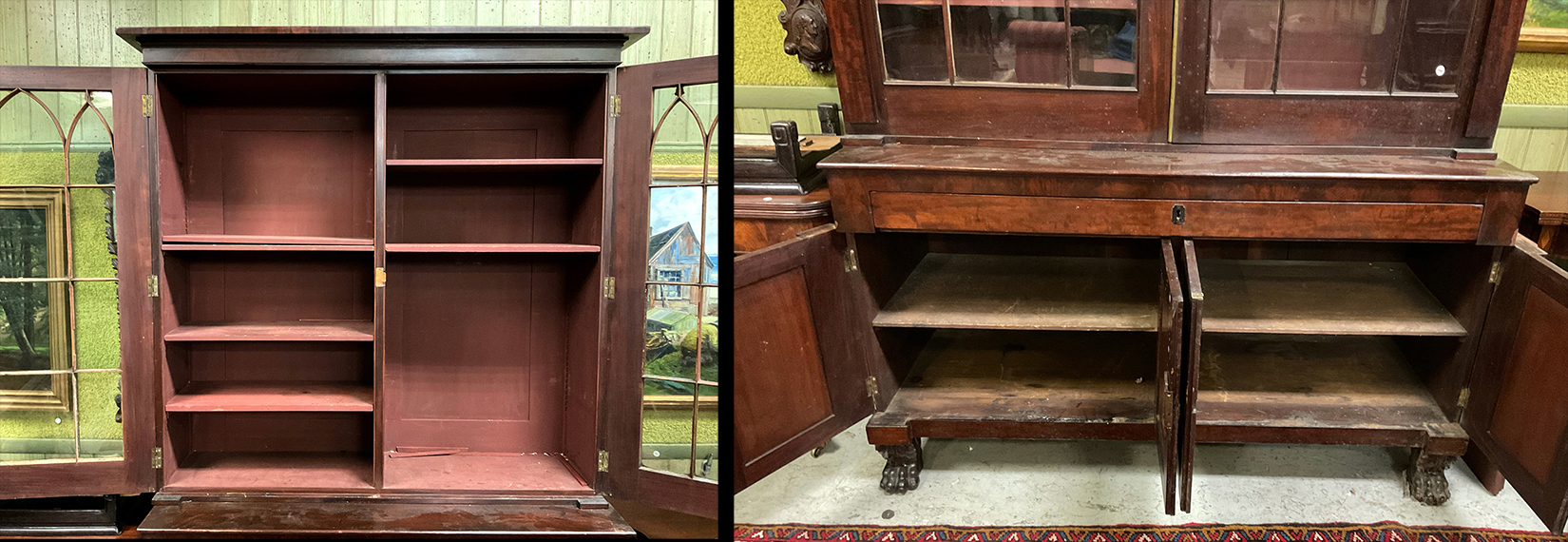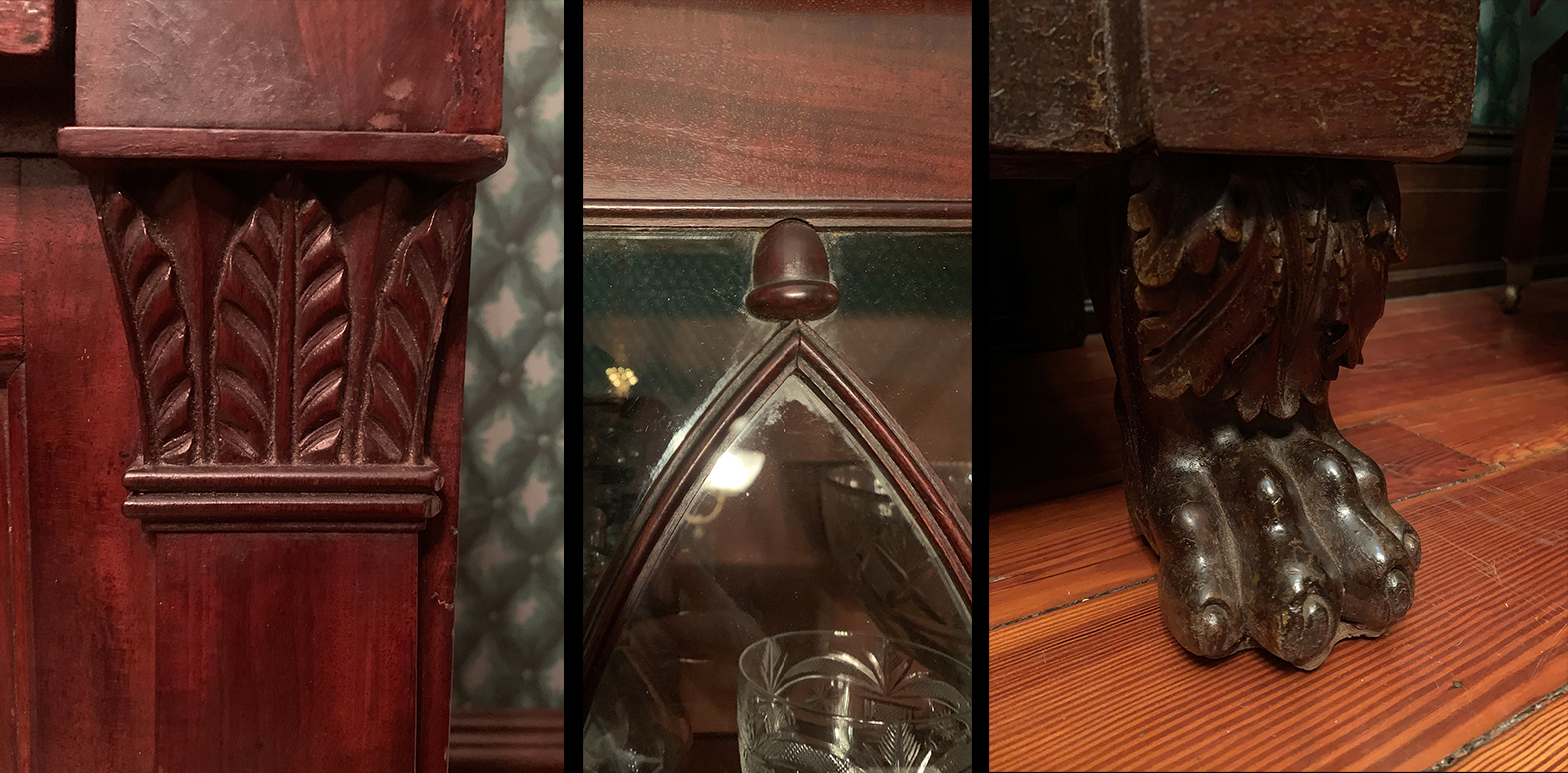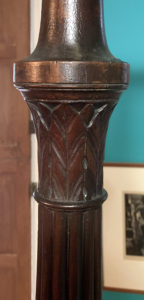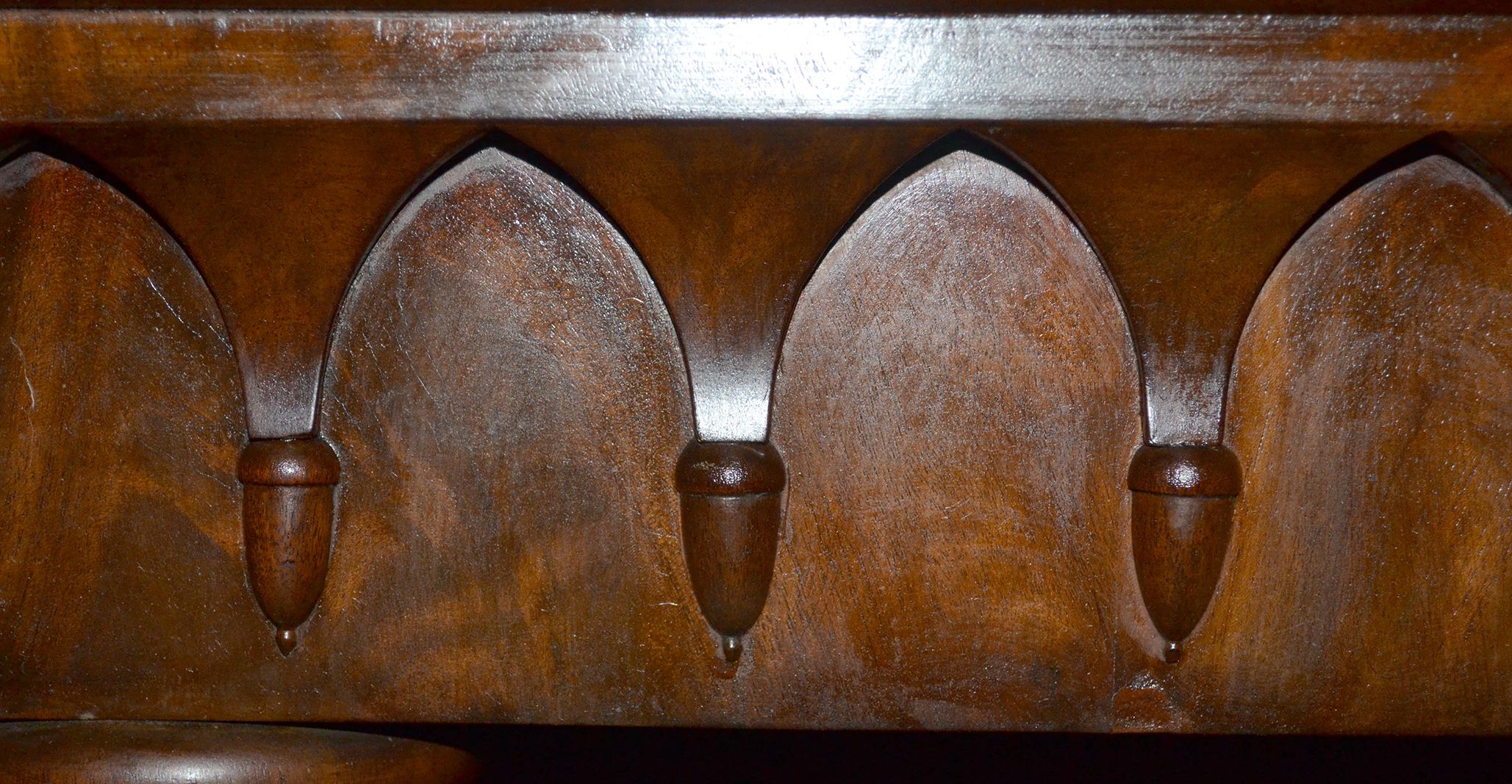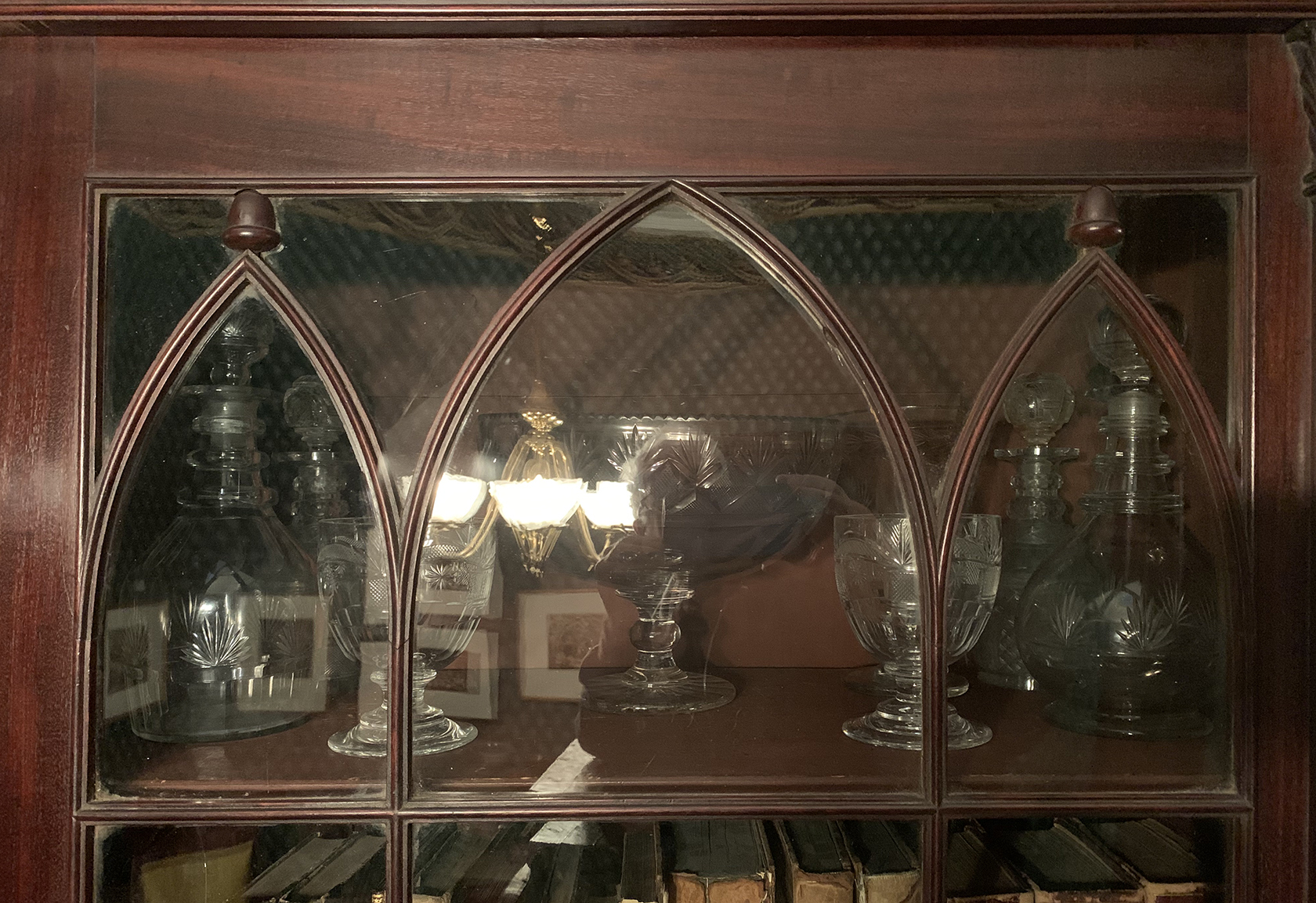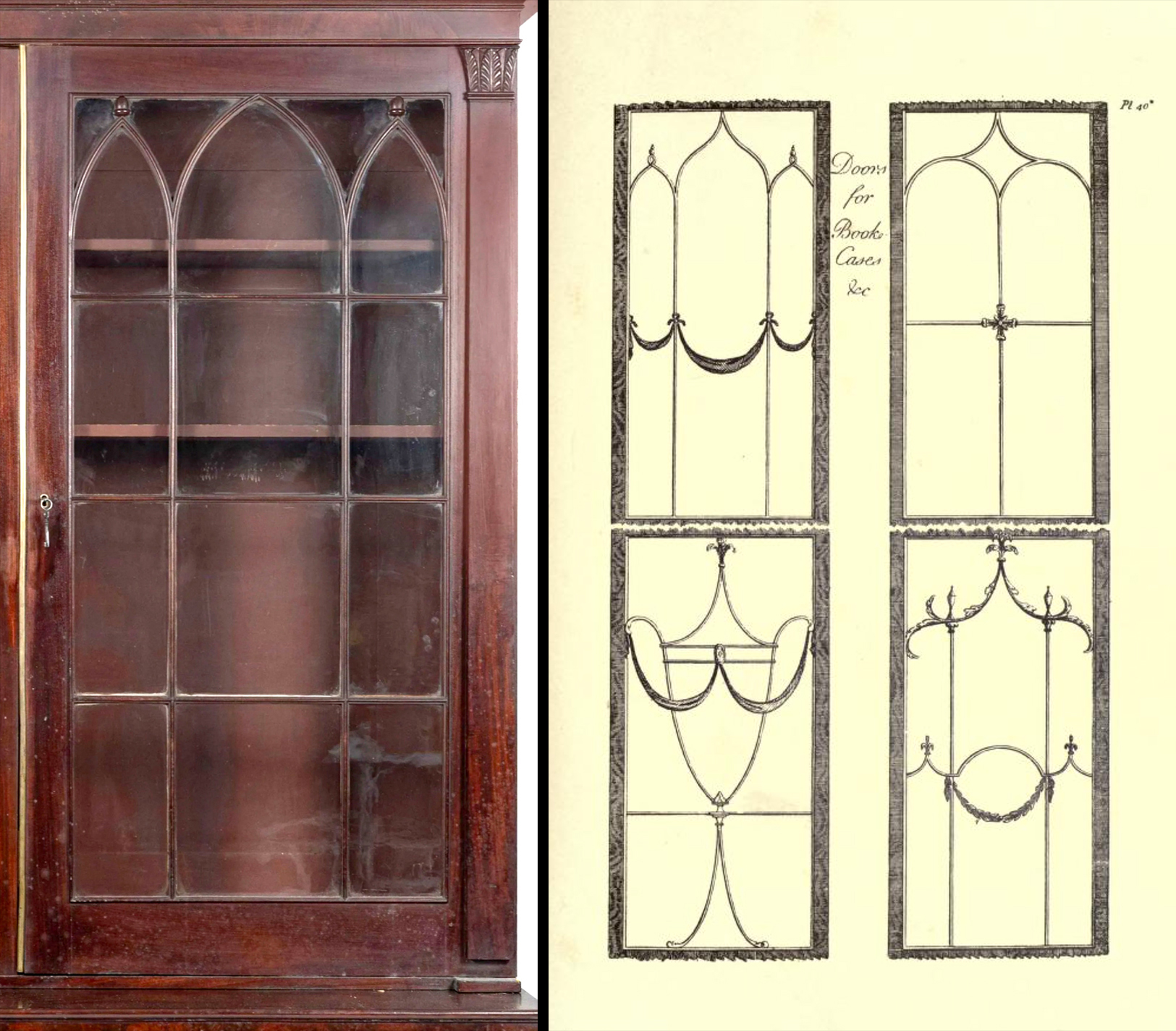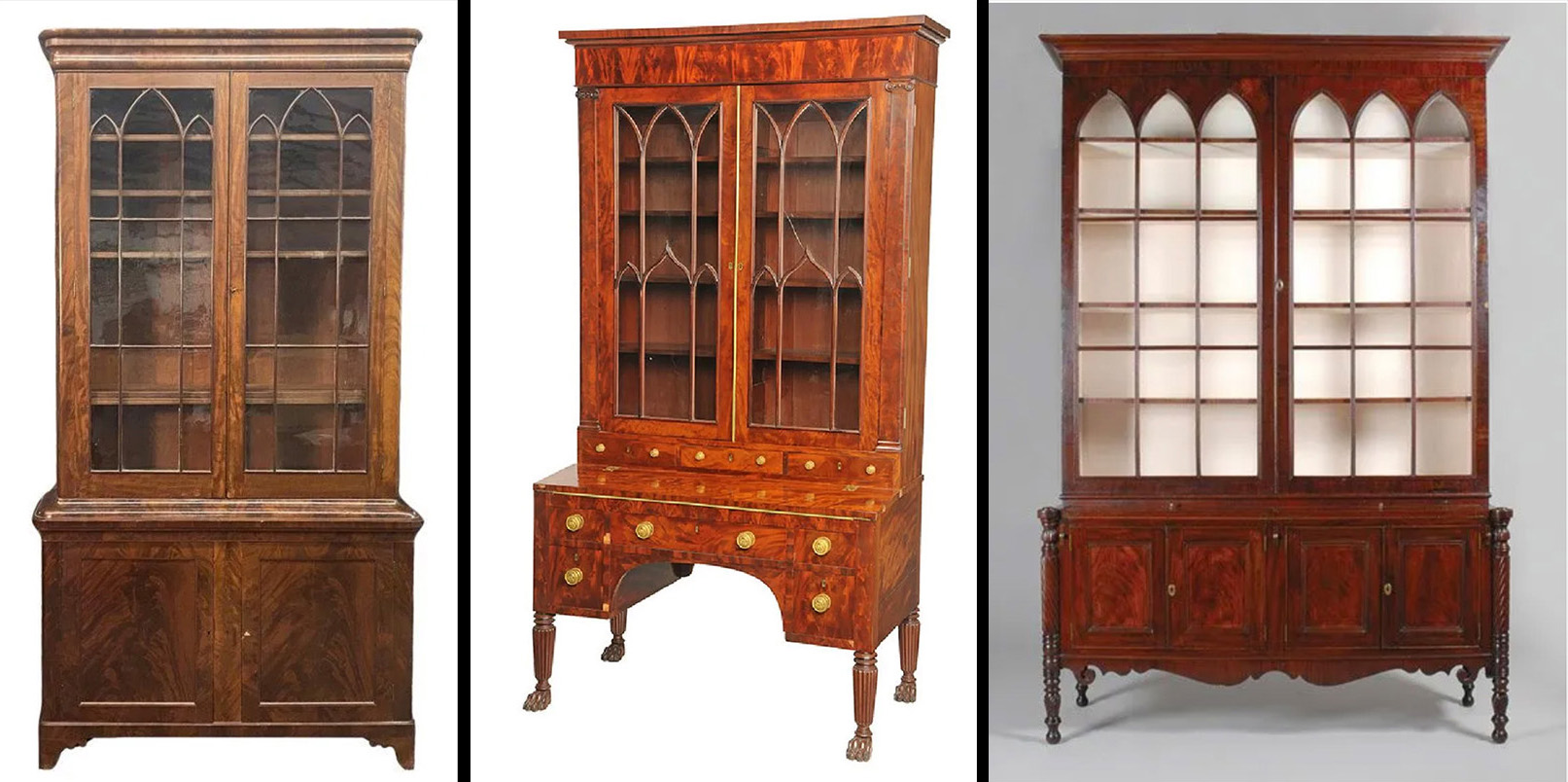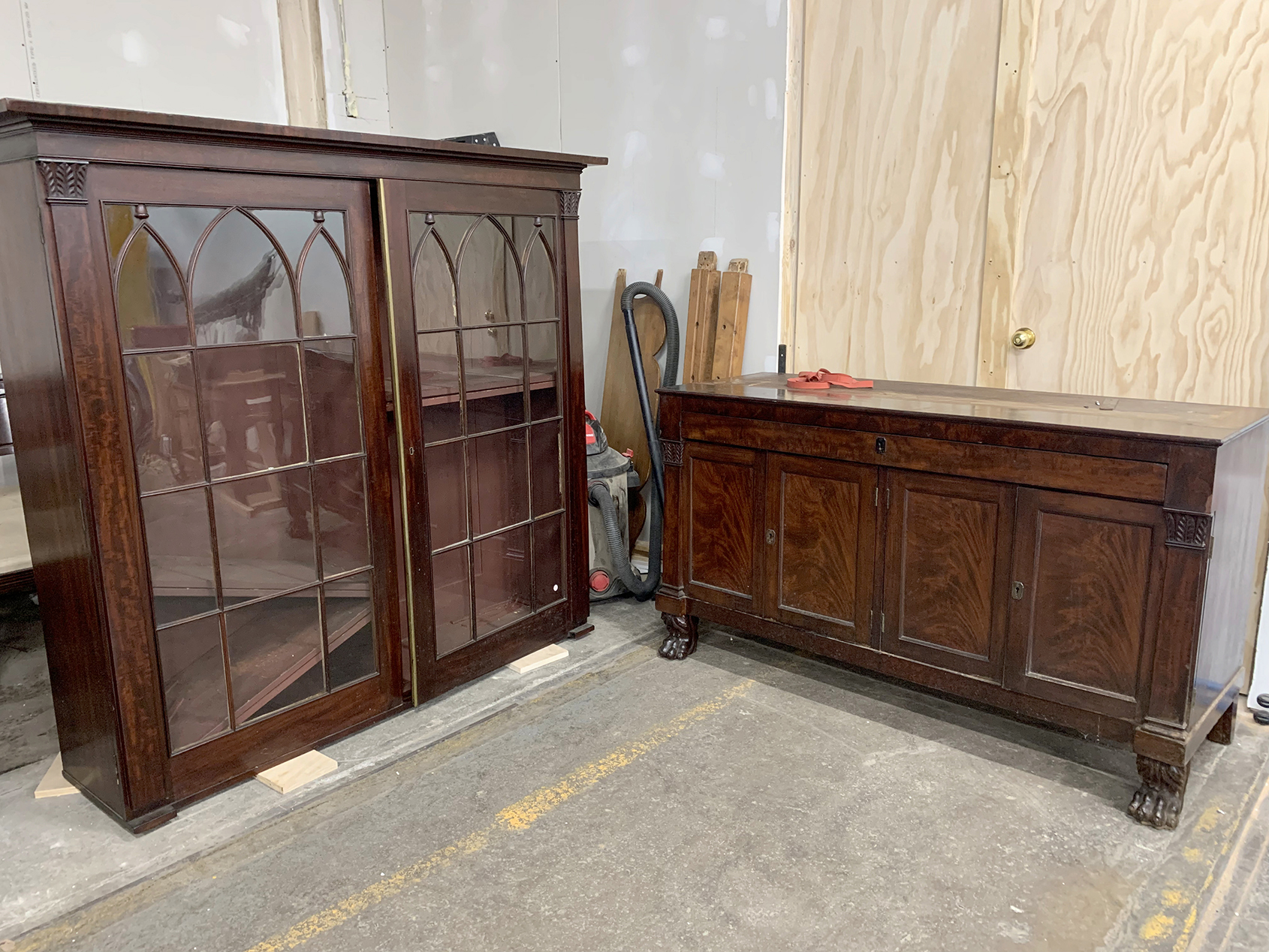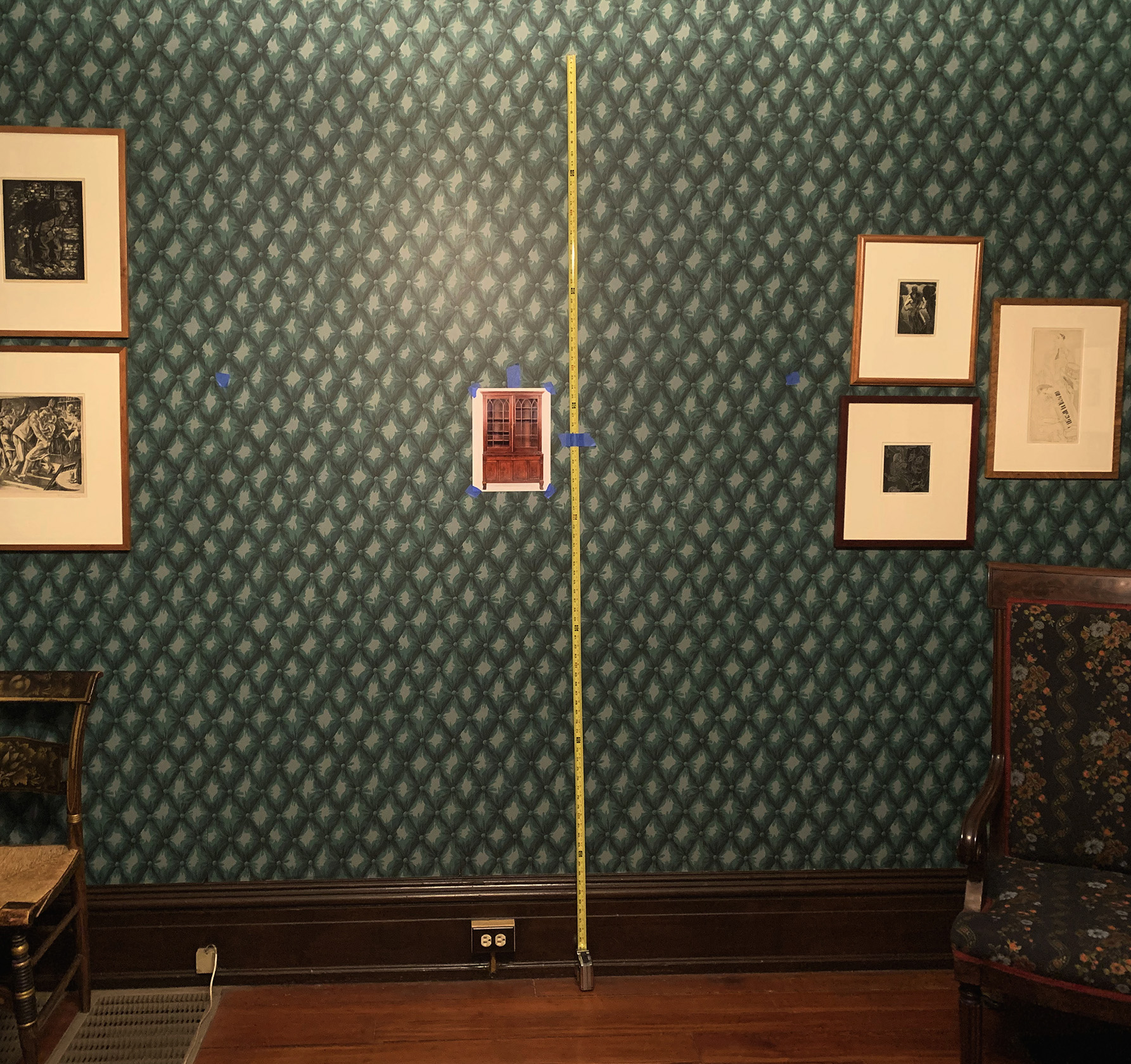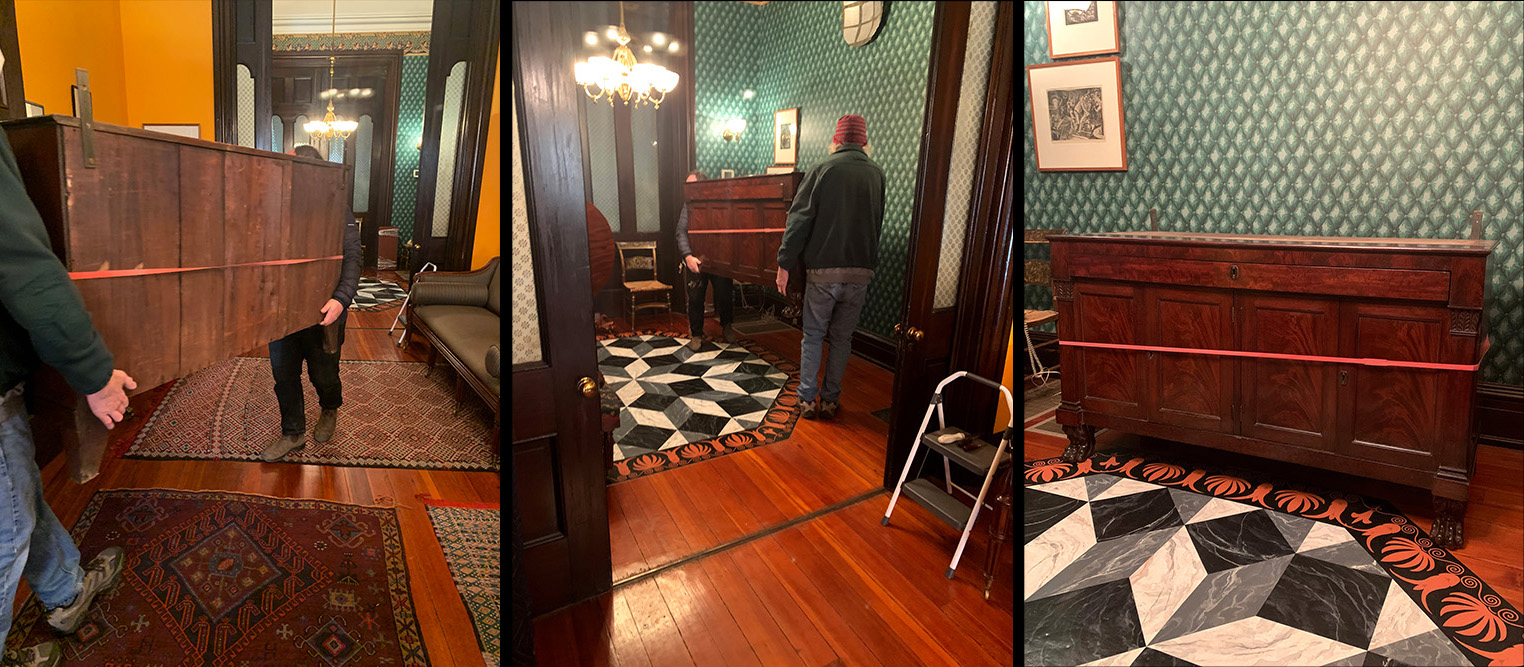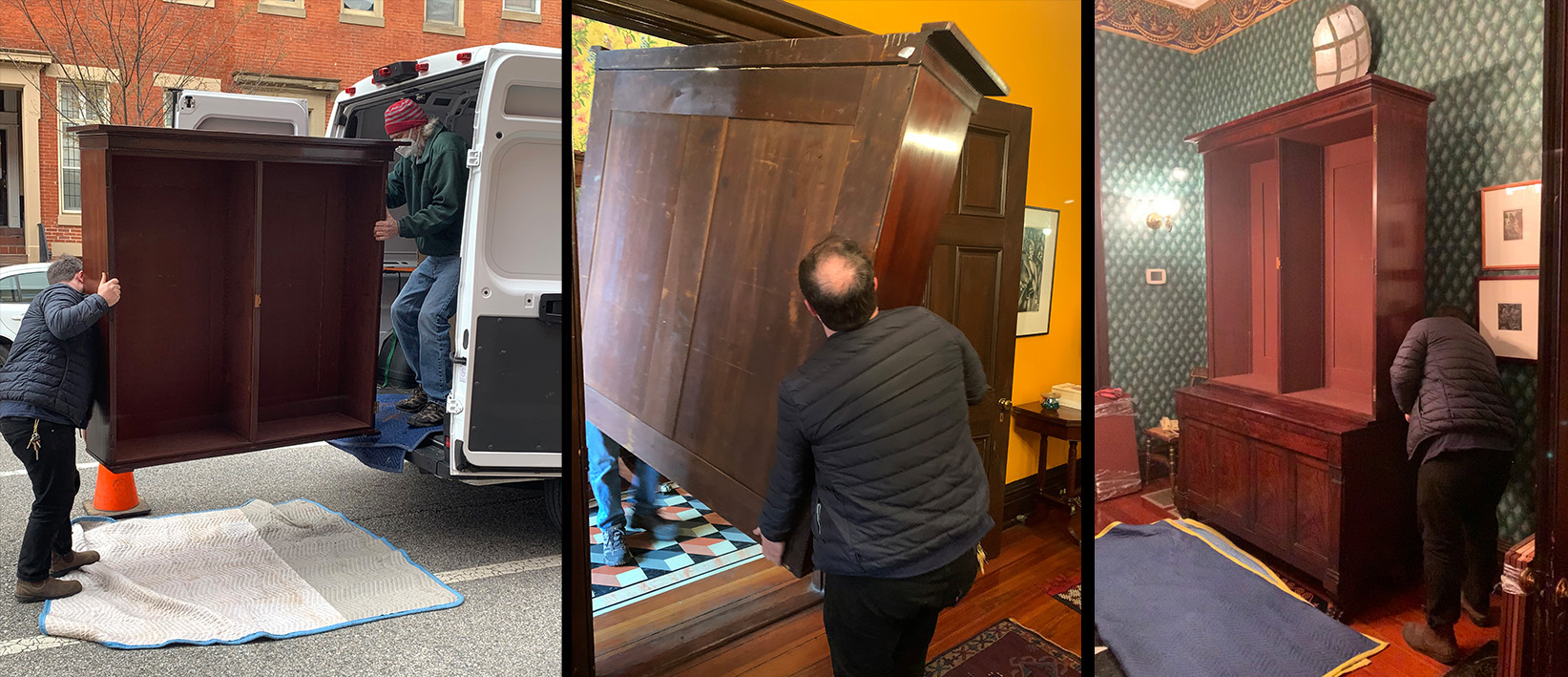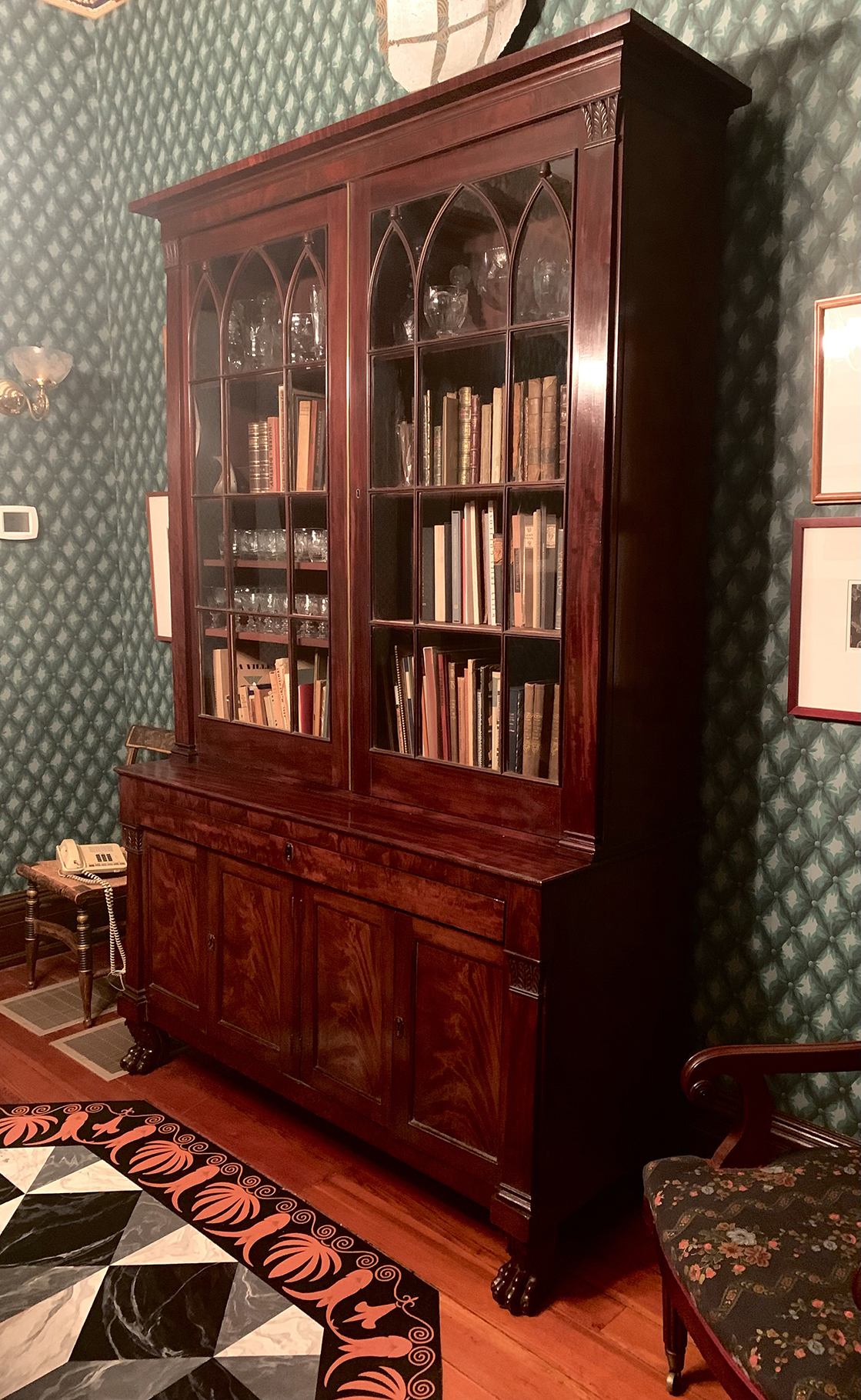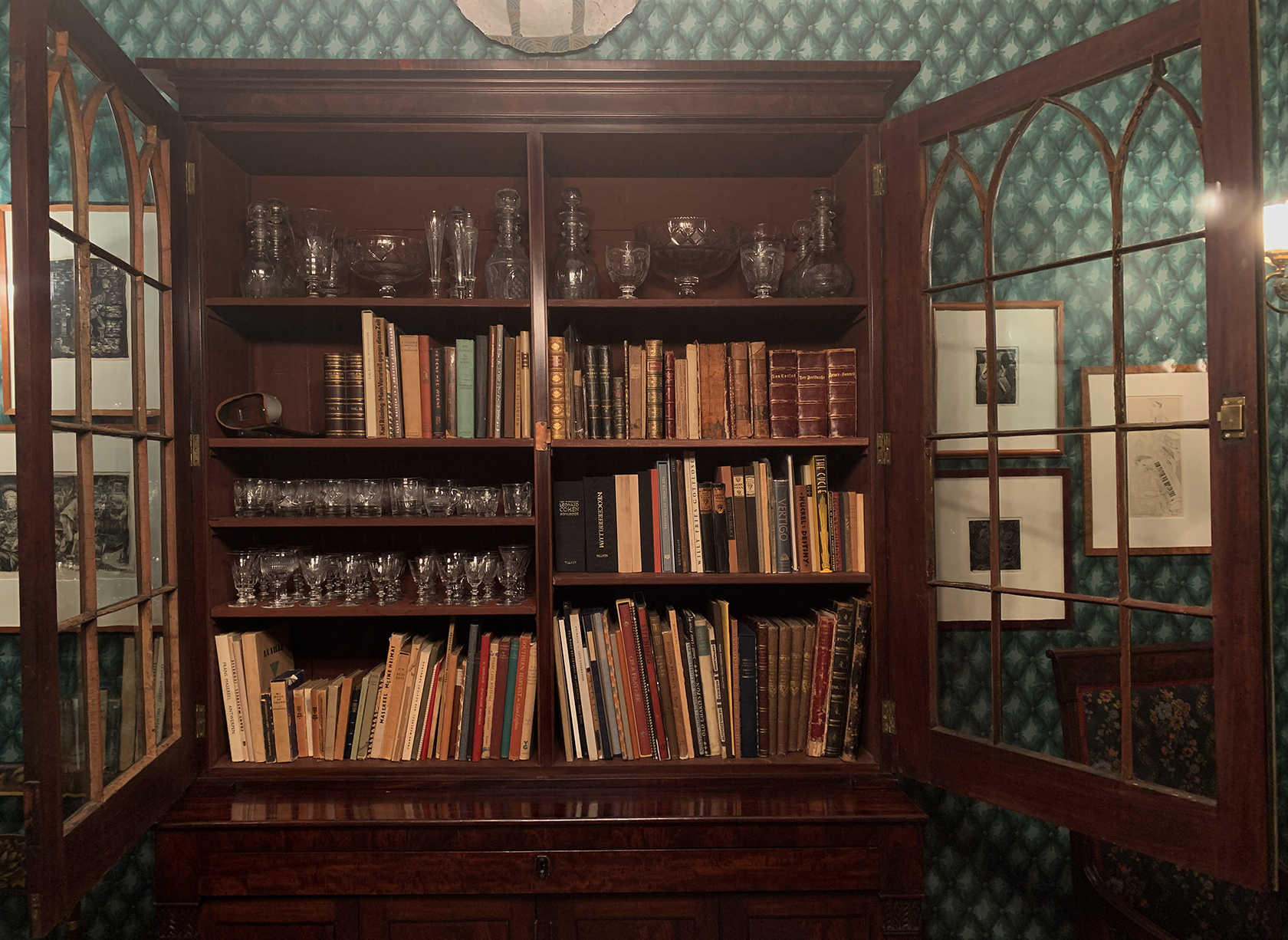Bookcase upgrade: Going High Style
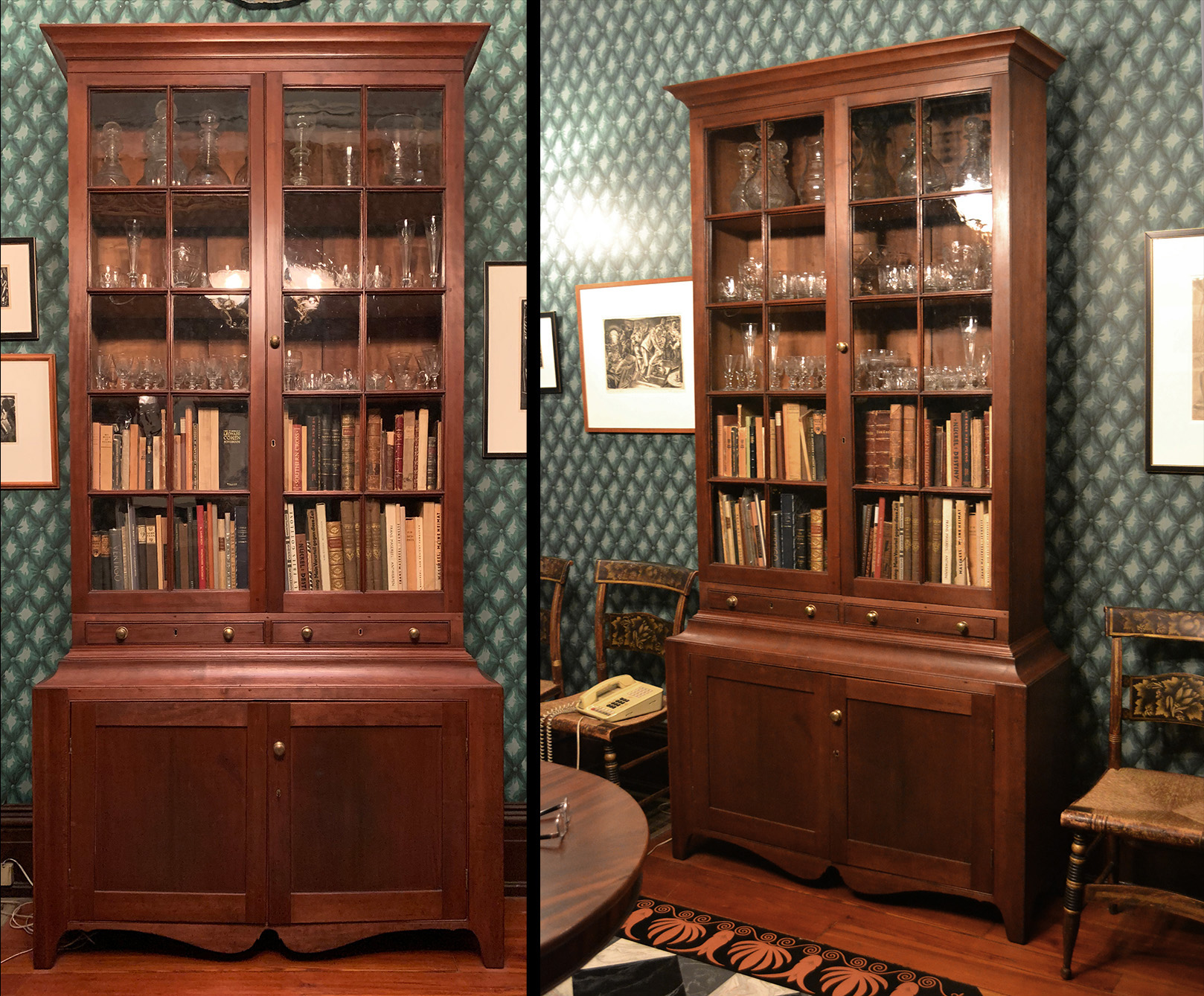
Introduction
I felt so fortunate to be able to live with the above two-part bookcase since buying it at a York, PA, antique show in 2012. Its purchase was made possible as part of my fee for being the executor of my mother’s estate. The dealer said it has been painted over, and he had it scraped down to expose its lovely cherry primary wood. I loved the dramatic transition from the cupboard base to the bookcase top with its two narrow drawers. Most of the glass appeared to be original in the pair of 10-light doors. Ditto for the brass hardware.
Yet its shelves were fixed (to line up with the door muntins), which prevented me from displaying a number of the books in my collection. And the shallow depth of the cupboard also limited storage of larger volumes and portfolios.
So, while American federal–in this case, perhaps Philadelphia, c. 1810-20–bookcases are quite uncommon, I kept my eye open for an upgrade, which in this case meant larger capacity, flexible shelving options and, yes, a higher style production. By using the phrase–”higher style”–I must admit I wanted a product of a high-end urban cabinetmaker using choice mahogany primary woods. While beautifully proportioned, my first bookcase looked somewhat out of place among the furnishings in the house’s three parlors.
THE UPGRADE
When this bookcase appeared last summer online among the lots an Eldred’s auction in East Dennis, MA, I immediately requested a few photos and a condition report. Here’s what the initial lot listing read:
FEDERAL BREAKFRONT
New York, Circa 1820
In mahogany and mahogany veneer. Upper case with two Gothic glazed paneled doors. Lower case with a full-width drawer over four paneled cupboard doors. Both cases with flat foliate-carved columns at sides. Carved front paw feet.
Height 97”. Width 61”. Depth 22.5”.
And the condition report stated:
Minor veneer loss. Some finish wear. Bases to pilasters missing. A few small repairs throughout.
As to the missing “bases to pilasters,” notice in the overall photo that both the upper case and the lower case have matching (except for height) pilasters, but that the pilasters on the upper case are missing their bases. I figured it would be would be easy to be reproduce them that the bases on the lower-case pilasters would serve as a guide.
The piece had real potential to be a dramatic addition to the house. So, as with any potential collecting decision, I started research.
Here are the three carved elements of the bookcase. The most common of the three is the lion’s foot with an acanthus leaf above it. Many New York federal case pieces have them. (Note peeking out below the central toes is a metal plate. Both front feet have plates. When they were added I don’t know, but the case stands nicely upright with them.)
And while I could not find the exact design of the pilaster capitals (left photo) via an online search, the use of acanthus leaves to create a Corinthian capital is also typical.
Here is an acanthus leaf capital on a bed post that I purchased earlier this year and blogged about. (LINK)
But the use of acorns as part of the door muntin pattern I found to be most unusual. When acorns do appear on federal furniture, it’s usually as a descending item. This photo is from the skirt of a marble-top Boston pier table that I’ve blogged about. (LINK)
The decision to place the acorns where they are–at the top of the shorter flanking arches on each door– is a curious one.
Yet the decision to have shorter flanking arches comes right out of one of the most influential British books on decorative arts of the day.
Here is one of the bookcases doors with Plate 40 from A. Hepplewhite & Co.’s “The Cabinet-makers and Upholsterer’s Guide,” (I & J Tylor, London, 1794). In the upper left design the flanking arches are narrower in width than the central arch and do not reach the top of the frame. Yet there are flame-like elements atop the flanking arches.
Looking at auction records on liveauctioneers.com, I found these examples of American federal bookcases with three arches on each door.
The one on the left came up for auction on 13 Dec. 2020 at Carlsen Gallery, Freehold, NY. It was listed as a federal bookcase, c. 1830, by John Mead, Albany. It’s close to the Hepplewhite pattern of shorter flanking arches.
The one in the middle was sold on 26 Jan. 2019 at Brunk auctions, Ashville , NC. It was listed as “New York, circa 1825, possibly from the shop of Duncan Phyfe.” The arches halfway up the door follow the Hepplewhite pattern, while the arches at the top become one full arch (in the center) and two flanking half arches. The upper case has pilasters with ionic capitals.
The one on the right was sold 2 May 2006 by Doyle New York. It was listed as “Federal Mahogany Secretary Bookcase, New England, circa 1815-20.” Here all of the arches are of the same width, and all touch the top of the door frames. Here the spandrels (spaces between the arches) are wood, not glass.
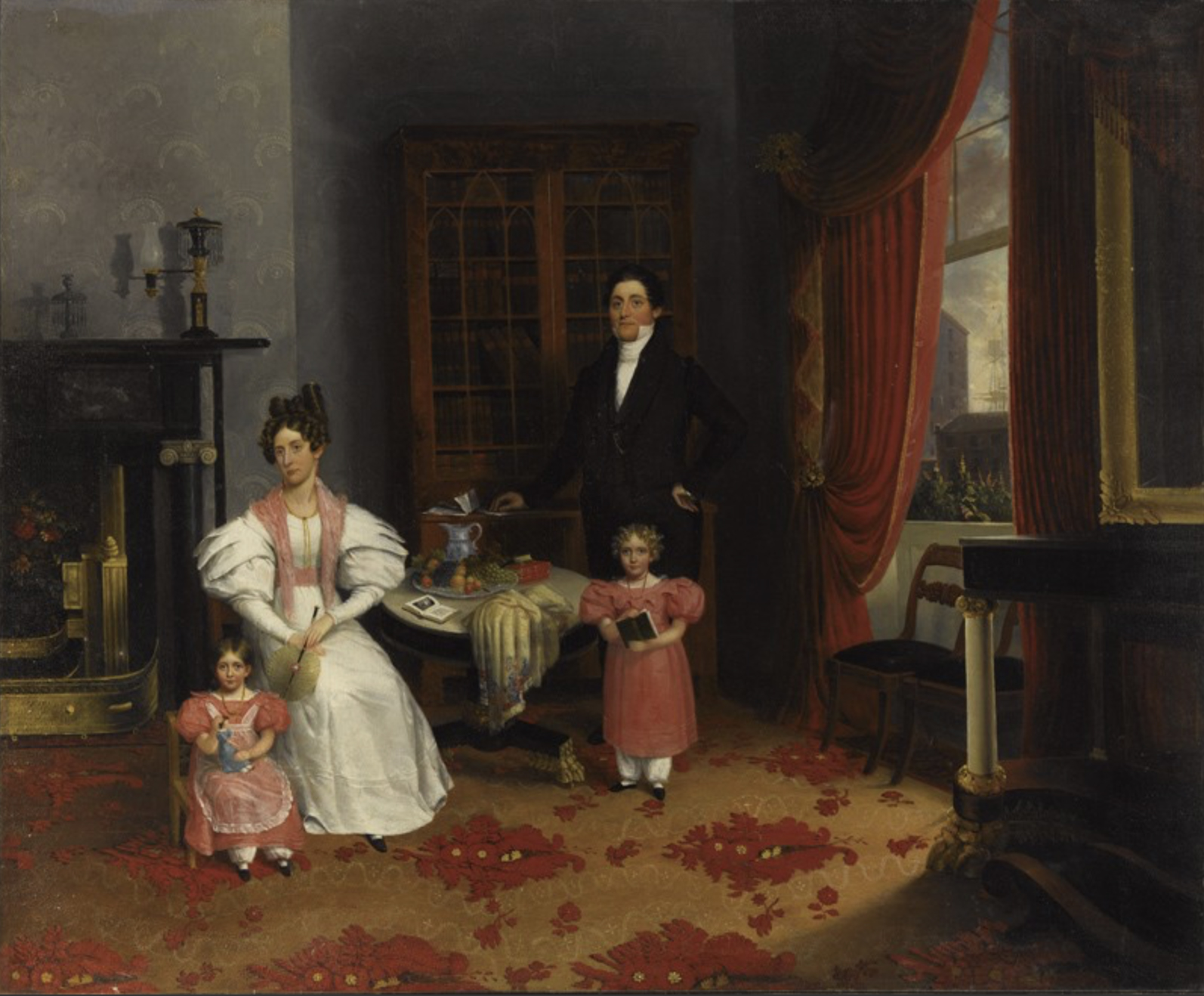
Attributed to George W. Twibill Jr. (1806–1836). “The Family of John Q. Aymar,” ca. 1833. Oil on canvas, 34 3/4 x 42 in. (88.3 x 106.7 cm). The Metropolitan Museum of Art, New York, Gift of A. Grima Johnson, 2008 (2008.573).
And then there is this painting from the early 1830s. It can be found on the website of The Metropolitan Museum of Art, New York (LINK). Attributed to George W. Twibill Jr., this oil painting is of the Aymar family shown in their New York City townhouse.
The painting clearly shows a bookcase like the one that Carlsen Gallery said was made in Albany by John Mead.
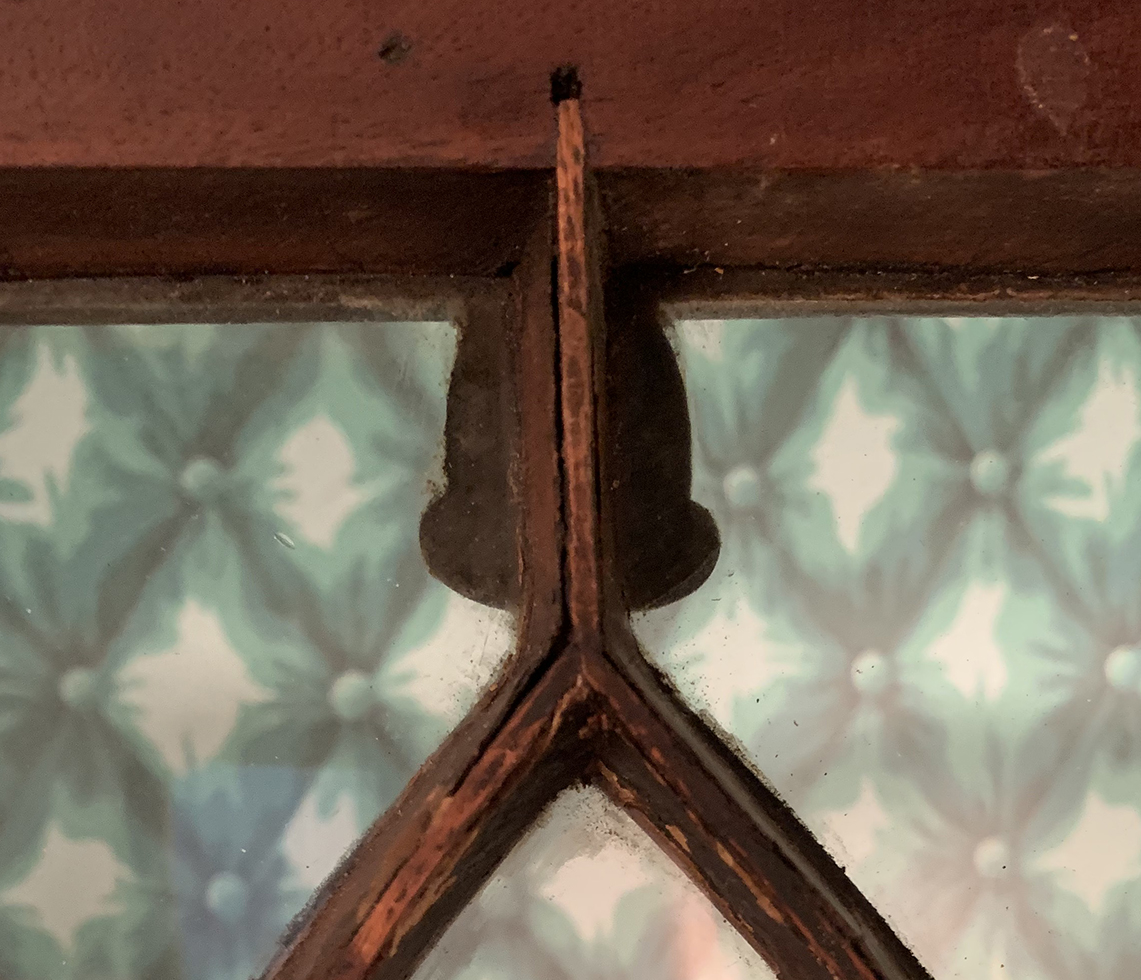 Perhaps one of the reasons that the cabinetmaker of the bookcase for sale at Eldred’s chose not to top out the flanking arches well below the door frame–as are the ones in the painting and the ones on the bookcase attributed to John Mead–was the issue of cutting the glass. By bringing the flanking arches high enough and adding a small vertical extension of the muntin (as shown in the photo from the inside of a door) which was then covered up with an acorn, cutting glass became easier. Instead of one piece of glass that needed to be cut around a fully arched muntin, two pieces of glass each cut to fit around half of an arch was the solution.
Perhaps one of the reasons that the cabinetmaker of the bookcase for sale at Eldred’s chose not to top out the flanking arches well below the door frame–as are the ones in the painting and the ones on the bookcase attributed to John Mead–was the issue of cutting the glass. By bringing the flanking arches high enough and adding a small vertical extension of the muntin (as shown in the photo from the inside of a door) which was then covered up with an acorn, cutting glass became easier. Instead of one piece of glass that needed to be cut around a fully arched muntin, two pieces of glass each cut to fit around half of an arch was the solution.
The Wait and installation
Of course I wouldn’t be writing this post had I not succeeded in winning the bookcase at Eldred’s. To help pay for it I sold the other bookcase to the dealer I had bought it from. That meant piling all of the books and glassware on the dining room table and sideboards.
Delivery was made in September to Kerrigan Restoration, Phil Kerrigan’s a one-man shop in Baltimore. He opened his doors after Adajian & Nelson, his former employer and the furniture restorer that I had used for decades, closed its shop in 2018. Phil warned me that he was booked up and not to expect anything until December. This meant that the table in the formal dining room would be literally “booked up” until the new bookcase was delivered.
But when December came and passed–as a bit of a nudge–I posted this picture on social media. I rearranged framed prints to leave a space big enough for the bookcase with dimensions: H 97″, W 61, D 22.5″. The tape measure shows the height of the new bookcase.
That photo accurately represented the situation until 28 March, 2022, when Kerrigan pulled up with the bookcase in a van. This is how installation worked out:
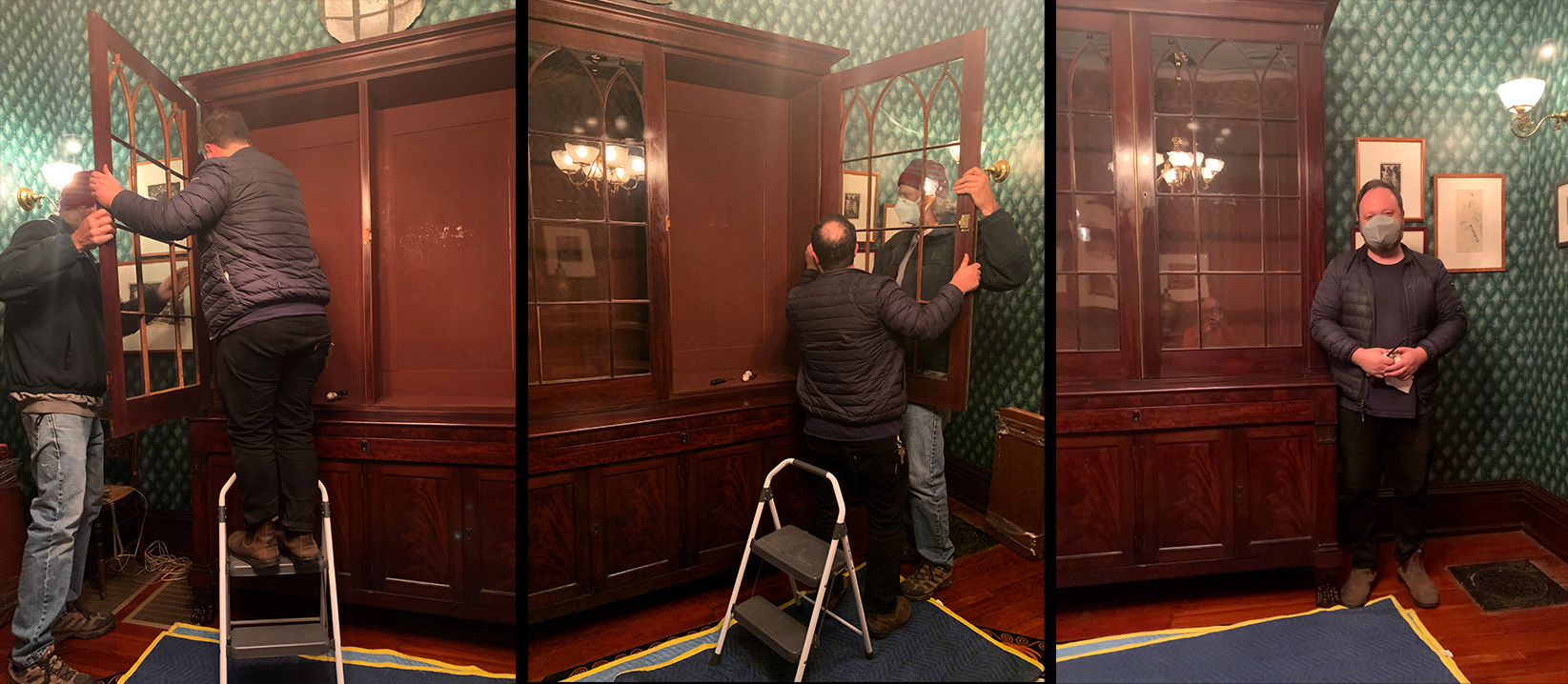
(Right) Kerrigan posed when installation was completed.
Beside making the missing pilaster bases, replacing some lost veneers and cleaning up the finish, Kerrigan also made me a pair of extra shelves stained red like the original six. I used one for the small glassware on the left side and one is in storage.
Why Now?
Fittingly, I’m blogging on the bookcase over six months since its installation, which occurred six months after it arrived at the restorer’s. Since its installation in March, I’ve posted blogs on two other furniture acquisitions: four Baltimore fancy chairs in May (LINK) and the high-post bed in August. (LINK)
So what is the catalyst for blogging now on the bookcase? Simply, the pending arrival on Halloween of a very handsome drop-leaf table with a beautifully developed trestle leg structure.
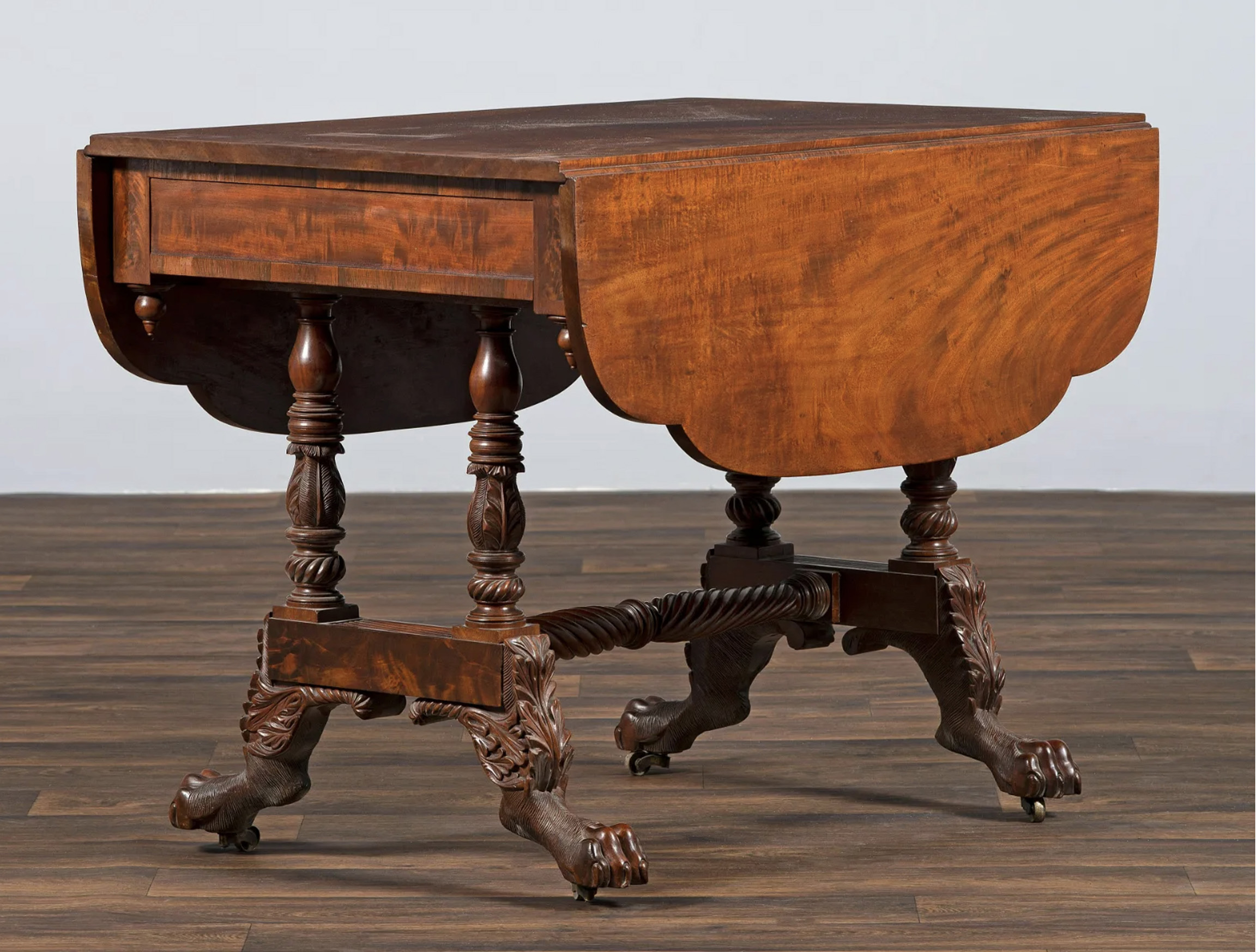
***
Trackback URL: https://www.scottponemone.com/bookcase-upgrade-going-high-style/trackback/

